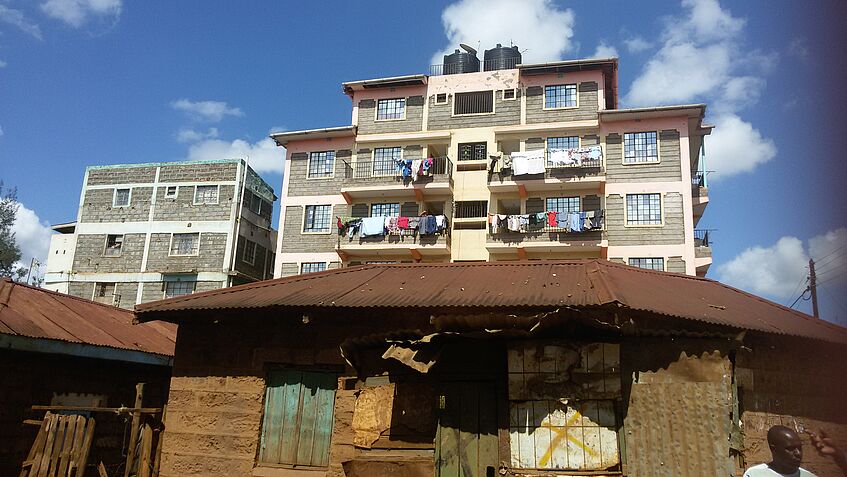Our case studies
Lubumbashi, DRC

View over houses in L'ushi, @Daniela Waldburger
Language usage
In Lubumbashi (Belgian colony, subsequently Katanga, and later DR Congo), the centre of the mining area in Katanga, a new city developed in 1910 making employment-tied housing urgently necessary to accommodate a rapidly increasing number of workers. Read more...
Thika, Kenya

Vasey Housing Scheme, nowadays Majengo, in Thika @Martina Barker-Ciganikova
Governance
Thika, located in the White Highlands of Kenya, developed due to its proximity to Nairobi into an agricultural and industrial hub that since the 1940s attracted migrant workers from throughout the country. All of them needed housing. Read more...
Livingstone, Zambia

View over houses in Ngwenya, Livingstone@ Carl Bodenstein
Agency
While the Copperbelt has attracted major research attention from urban anthropologists, the study of Livingstone remains neglected. An analysis of housing in Livingstone may therefore be a point of entry to a critical review of the more established narrative of Zambian urbanisation. Read more...
What links our case studies?
The three case studies of housing projects in Thika, Lubumbashi and Livingstone serve as magnifying lenses. These cities were based on different economies. We selected smaller, non-capital cities, which represent the most widespread forms of employment during the research period 1940s-1970s. All three are located at crossroads, railway and road networks, which will enable us to explore housing in hubs of migrant labour and export processing zones. All three cities played a significant role in the (post-)colonial economy and are situated within a region interconnected by mobility of labour. All three were founded in the early 1900s and gained prominence and experienced population growth that required change in housing policies following the economic boom in the respective fields of economic production. Subsequently, all three were marked by segregation policies with respect to housing. Through our three case studies, peculiar and micro-historical situations will be contextualised in broader settings of employment-tied housing and, moreover, housing policies in sub-Saharan Africa.
